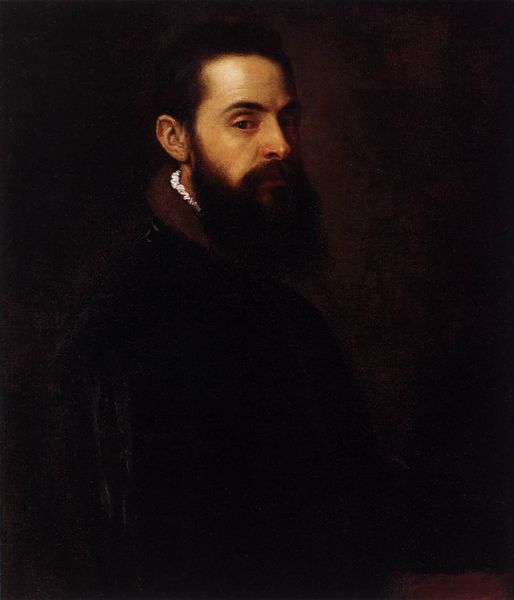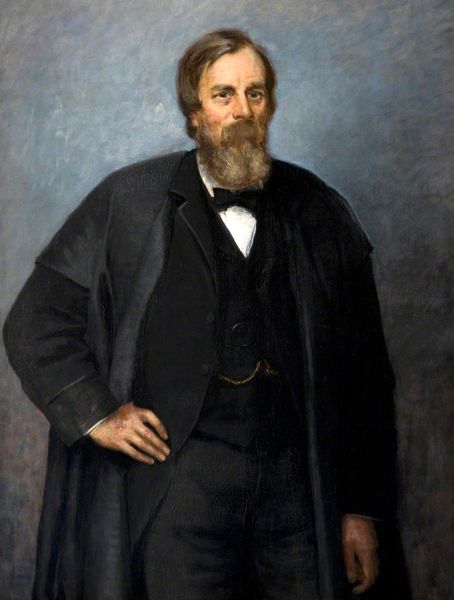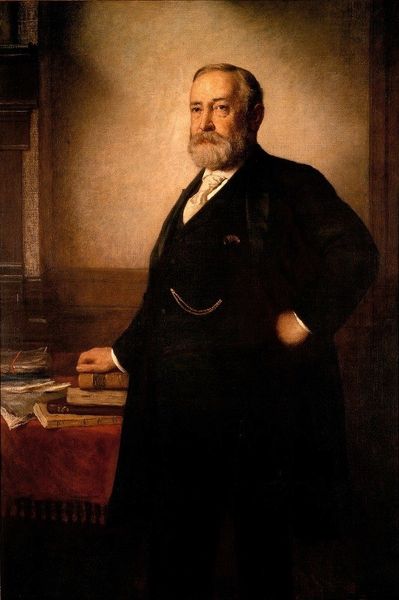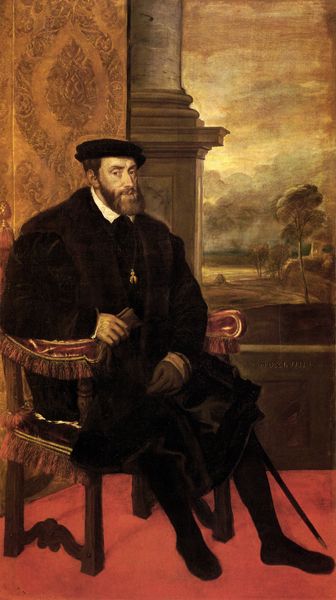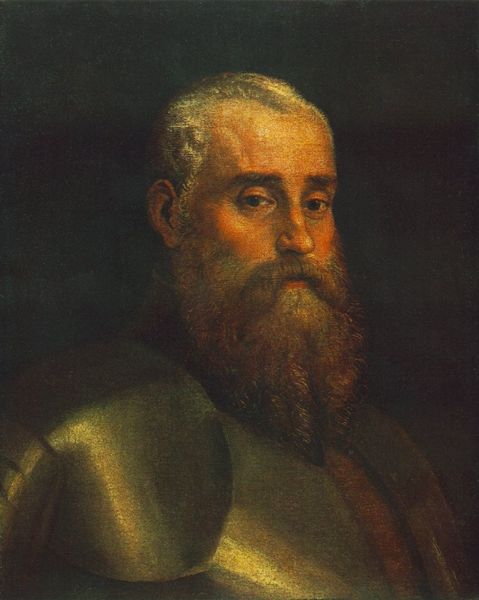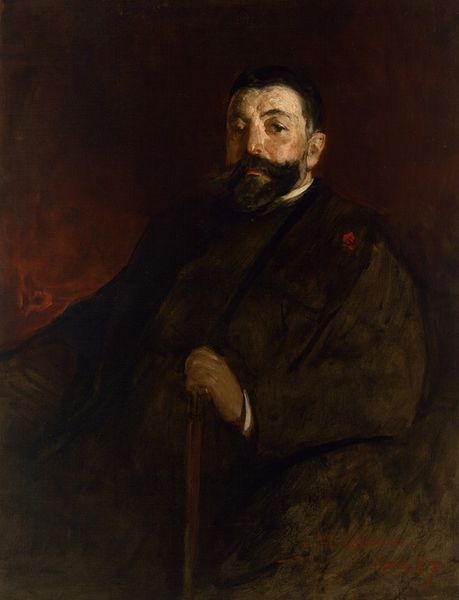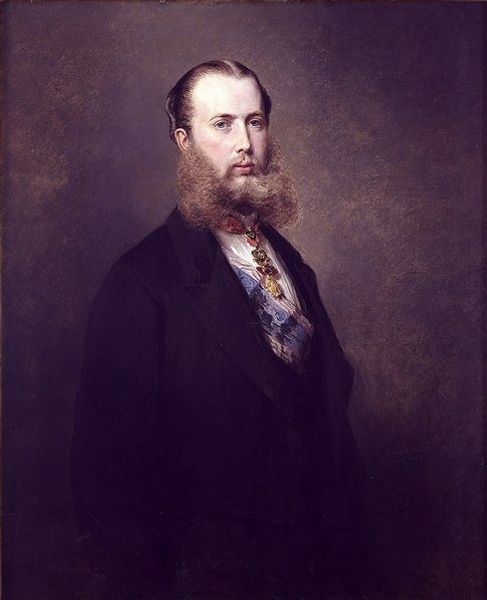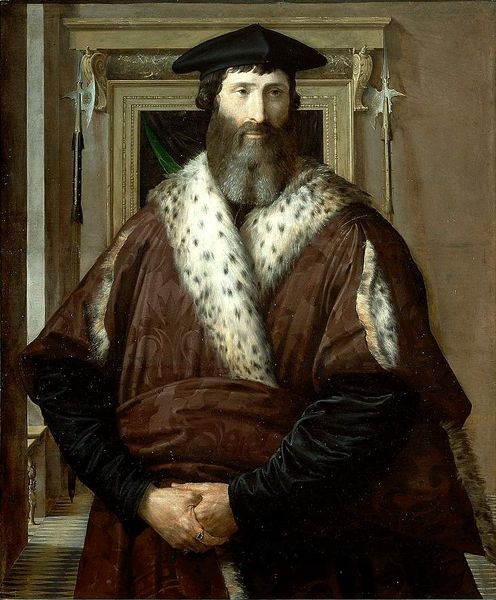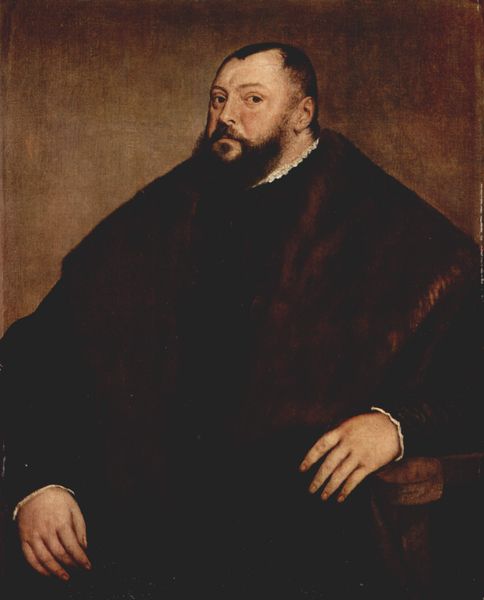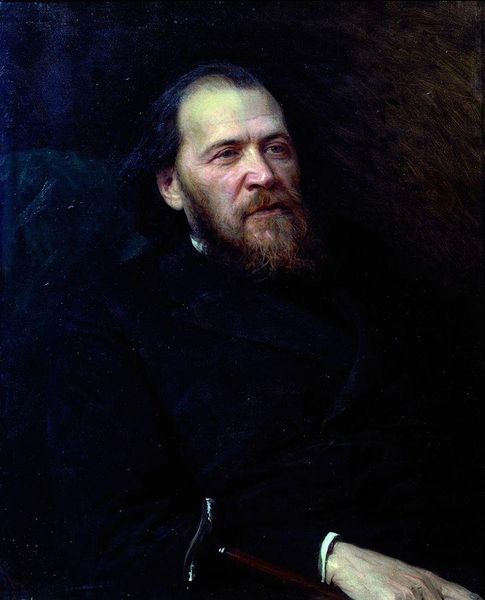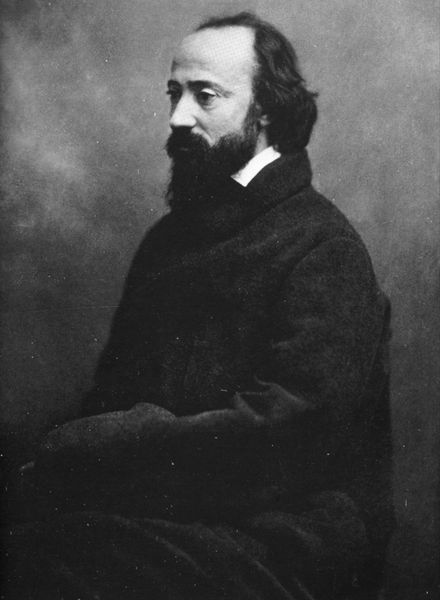
Copyright: Public domain
Curator: Franz Xaver Winterhalter painted this striking portrait, titled "Alfred Emilien, Comte de Nieuwerkerke," in 1852. The work, executed in oil, is currently held in a private collection. What strikes you first about it? Editor: The sheer weight of that cloak! It feels less like clothing and more like a signifier of wealth and power. The dark velvet seems incredibly luxurious. You can almost feel its texture. Curator: Precisely! Consider the socio-political context. Nieuwerkerke was superintendent of the museums of France under Napoleon III. His image, so meticulously rendered, needed to convey a certain...authority. Editor: Right. It’s about image construction and how powerful men are presented. But the cloak—isn't the use of velvet itself significant? Its production, its cost...that points to specific networks of artisans, trade routes, and consumer desires of the time. Curator: Absolutely. And it’s all carefully orchestrated to communicate a very particular message about status within the Second Empire. Think about the salons where this portrait might have been displayed; the discussions it would have prompted. The museum as a tool of empire-building. Editor: Beyond the overt display of status, I also see a touch of Romantic sensibility here. There's a quiet intensity in his gaze. He looks both powerful and...slightly melancholic? It's fascinating how Winterhalter captures both public image and something a bit more vulnerable. But it feels so calculated too! Curator: The artist's skill lay in flattering his sitters while simultaneously reinforcing their position within the social hierarchy. The precise brushwork, the careful attention to detail... Editor: Speaking of the painter, I’m thinking about his process. Imagine the hours spent rendering those fabrics, layering those oils. This portrait stands as a testament to skill and time investment. Curator: Ultimately, "Alfred Emilien, Comte de Nieuwerkerke," it's a work that encapsulates both individual portrayal and the mechanisms of power within its specific moment in time. Editor: Absolutely. A look at both individual craft, its role in producing the image, but a tool that cemented certain figures. Definitely a thought-provoking combination to consider when thinking about nineteenth-century portraits.
Comments
No comments
Be the first to comment and join the conversation on the ultimate creative platform.
